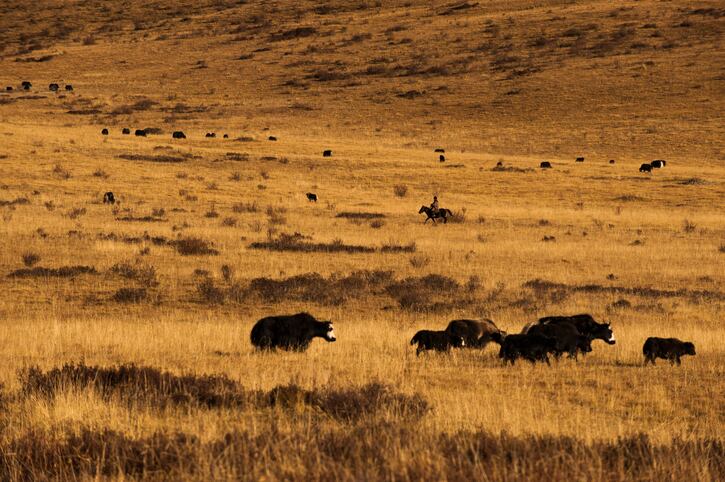As much as half of the rangelands and natural pastures that make up 54% of the world’s land are now degraded, risking 1/6th of global food supply and a third of the earth’s carbon reservoir, according to a report from the UN Convention to Combat Desertification (UNCCD).
The report’s 60+ expert contributors from over 40 countries agree that past estimates of degraded rangeland worldwide – roughly 25% – “significantly underestimates the actual loss of rangeland health and productivity” and could be as much as 50%.
Symptoms of the problem include diminished soil fertility and nutrients, erosion, salinization, alkalinization, and soil compaction inhibiting plant growth, all of which contribute to drought, precipitation fluctuations, and biodiversity loss both above and below the ground.
Two billion people – small-scale herders, ranchers and farmers, often poor and marginalised – depend on healthy rangelands worldwide.
But according to the report from UNCCD (an international agreement aimed at combating desertification, particularly in Africa), degradation is being driven largely by converting pastures to cropland and other land use changes due to population growth and urban expansion, rapidly rising food, fibre and fuel demands, excessive grazing, abandonment of maintenance by pastoralists, and policies that incentivise overexploitation.
Ironically, the report underlines, efforts to increase food security and productivity by converting rangelands to crop production in mostly arid regions have resulted in degraded land and lowered agricultural yields.
Why should pastoralism be protected?
A core recommendation of the report, therefore, is to protect pastoralism – the system of often mobile, extensive livestock production on rangelands – which it says can improve biodiversity, help sequester carbon and protect the environment.
“From the tropics to the Arctic, pastoralism is a desirable default and often the most sustainable option that should be incorporated into rangeland use planning,” said UNCCD’s executive secretary Ibrahim Thiaw.
According to the report, rangelands are often poorly understood. Traditional assessment methods and a lack of reliable data mean the real economic contribution of rangelands and pastoralism is often being undervalued, it said. Their immense value in food provisioning and climate regulation is being undermined by “weak and ineffective governance,” “poorly implemented policies and regulations,” and “the lack of investment in rangeland communities and sustainable production models”.
The report sets out what it calls an innovative conceptual approach that would enable policymakers to stabilise, restore and manage rangelands. One recommendation is to design and adopt rangeland conservation measures, within and outside protected areas, that support biodiversity above and below ground while boosting the health, productivity, and resilience of extensive livestock production systems.
Another is to adopt and support pastoralism-based strategies and practices that help mitigate harms to rangeland health, such as climate change, overgrazing, soil erosion, invasive species, drought, and wildfires, adding that solutions must be tailored to the characteristics and dynamics of rangelands, which vary widely from arid to sub-humid environments, as seen in West Africa, India or South America.
“For the sake of future generations and economic stability, we need to improve awareness of and safeguard the immense value of rangelands. Due to their dynamic nature, predicting the consequences of rangelands degradation on economics, ecology, and societies is challenging,” said Carlos Manuel Rodríguez, CEO and chairperson of the Global Environment Facility. “Managers require authoritative insights into the response of rangelands to different disturbances and management approaches, including policy tools that better capture the broad social importance of rangelands.”
“To have any chance of meeting global biodiversity, climate and food security goals, we simply cannot afford to lose any more of our rangelands, grasslands and savannahs, added Joao Campari, global food practice leader, at World Wildlife Fund. “Our planet suffers from their ongoing conversion, as do the pastoralists who depend on them for their livelihoods, and all those who rely on them for food, water and other vital ecosystem services.”
He said the UNCCD report reinforces that “too little political attention or finance is invested in protecting and restoring these critical ecosystems. Authorities must take place-based action to safeguard and improve the health and productivity of rangelands, grasslands and savannahs – to benefit people and planet.”




